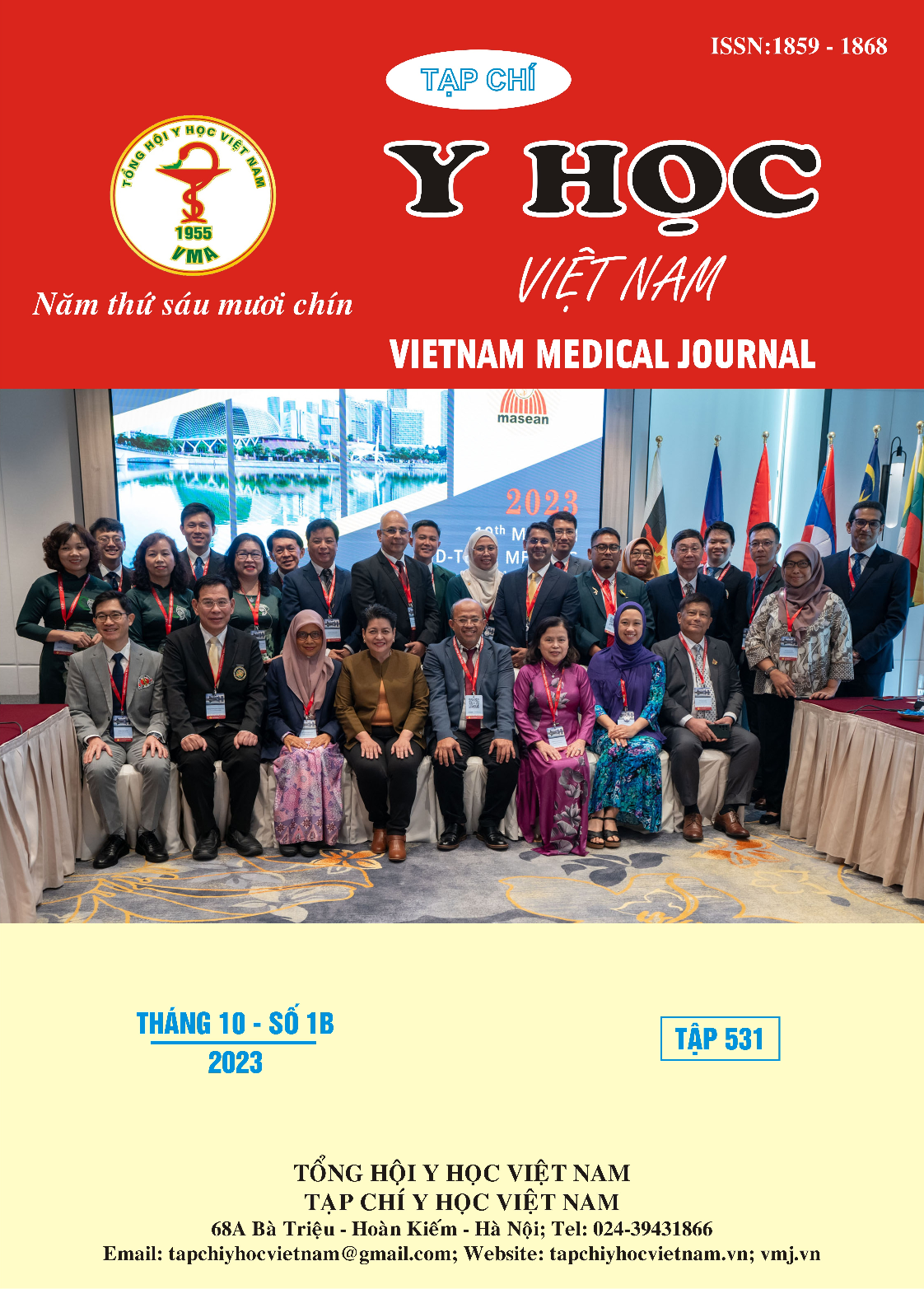THE OUTCOMES OF PARTIAL CEMENTLESS LONG STEM HIP REPLACEMENT FOR UNSTABLE INTERTROCHANTERIC FRACTURES IN PATIENTS ABOVE 70-YEARS-OLD AT E HOSPITAL
Main Article Content
Abstract
Background: Intertrochanteric hip fractures are quitely common. Hip replacement surgery is recommended for unstable intertrochanteric fractures in elderly with severe osteoporosis, making patients early rehabilitate and reduce time of hospitalisation. Objective: To evaluate the treatment outcomes of partial cementless long stem hip replacement surgery in patients above 70-years-old with intertrochanteric hip fractures at E Hospital. Subjects and methods: A descriptive and retrospective study was conducted on 69 patients with unstable intertrochanteric fractures (A2), who underwent partial cementless long stem hip replacement surgery for intertrochanteric hip fractures at E Hospital from November 2019 to the end of August 2022. Results: The mean age was 86,25±6,39 yrs. The majority of patients (76,8%) had a femoral stem axis aligned with the axis of the femur, varus axis was 20,3% and valgus was 2,9%. The average degree of stem fit to the femoral canal was 81,53±4,31%; with 80% or more achieving a fit, was observed in 79,7% of cases. Evaluation of hip joint function after surgery showed excellent and good outcomes in 78,4% of cases; the average HHS was 81,81±8,95 pts. Conclusion: Partial cementless long stem hip replacement surgery is a favorable treatment option for intertrochanteric hip fractures in the elderly population.
Article Details
Keywords
Intertrochanteric hip fractures, partial cementless hip replacement.
References
2. Stewart A , Calder L.D, Torgerson D.J, et al (2000). Prevalence of hip fracture risk factors in women aged 70 years and over. QJM : monthly journal of the Association of Physicians. Oct 2000;93(10):677-80.
3. Lee Y.K, Ha Y.C, Chang B.K (2011). Cementless bipolar hemiarthroplasty using a Hydroxyapatite coated long stem for osteoporotic unstable intertrochanteric fractures. The Journal of Arthroplasty Vol 26. No 4.
4. Nguyễn Mạnh Cường, Trần Trung Dũng, Nguyễn Đình Hiếu (2017). Đánh giá kết quả phẫu thuật thay khớp háng bán phần Bipolar trong điều trị gãy liên mấu chuyển xương đùi ở người lớn tuổi tại bệnh viện Xanh-Pôn. Y học thực hành, 8(1055)), 41-43.
5. Baker R.P, Bannister G.C (2006). Total hip arthroplasty and hemiarthroplasty in mobile, independent patients with a displaced intracapsular fracture of the femoral neck: A randomized controlled trial. The Journal of Bone & Joint Surgery ; vol 88-A, no. 12, December 2006.
6. Mai Đắc Việt (2017). Nghiên cứu đặc điểm lâm sàng, mô bệnh học và đánh giá kết quả thay khớp háng toàn phần ở bệnh nhân hoại tử vô khuẩn chỏm xương đùi giai đoạn IV,V, VI. Luận án Tiến sĩ Y học, Học viện Quân Y.
7. Kim Y.H, Kim J.S, Park J.W, et al (2011). Contemporary total hip arthroplasty with and without cement in patients with osteonecrosis of the femoral head: a concise follow-up, at an average of seventeen years, of a previous report. J Bone Joint Surg Am;93(19):1806-1810.
8. Đào Xuân Thành (2012). Nghiên cứu kết quả thay khớp háng toàn phần không xi măng và thay đổi mật độ xương quanh khớp nhân tạo. Luận án Tiến sĩ Y học, Đại học Y Hà Nội.
9. Sancheti K.H, Sanchet P.K, Shyam A.K (2010). Primary hemiarthroplasty for unstable osteoporotic intertrochanteric fractures in the elderly: A retrospective case series. Indian Journal Orthopaedics, 44 (4), 428-438.
10. Nguyễn Văn Thoan (2018). Đánh giá kết quả thay khớp háng bán phần chuôi dài không xi măng ở bệnh nhân cao tuổi gãy liên mấu chuyển xương đùi tại bệnh viện Việt Đức. Luận văn Thạc sĩ Y học, Đại học Y Hà Nội.


